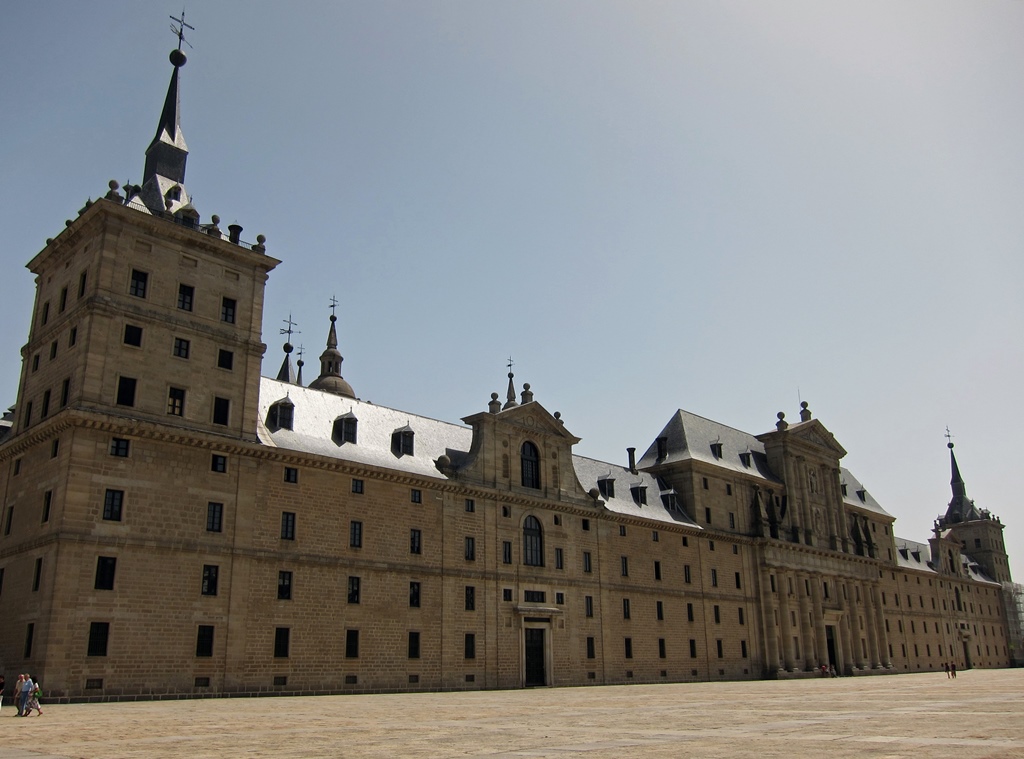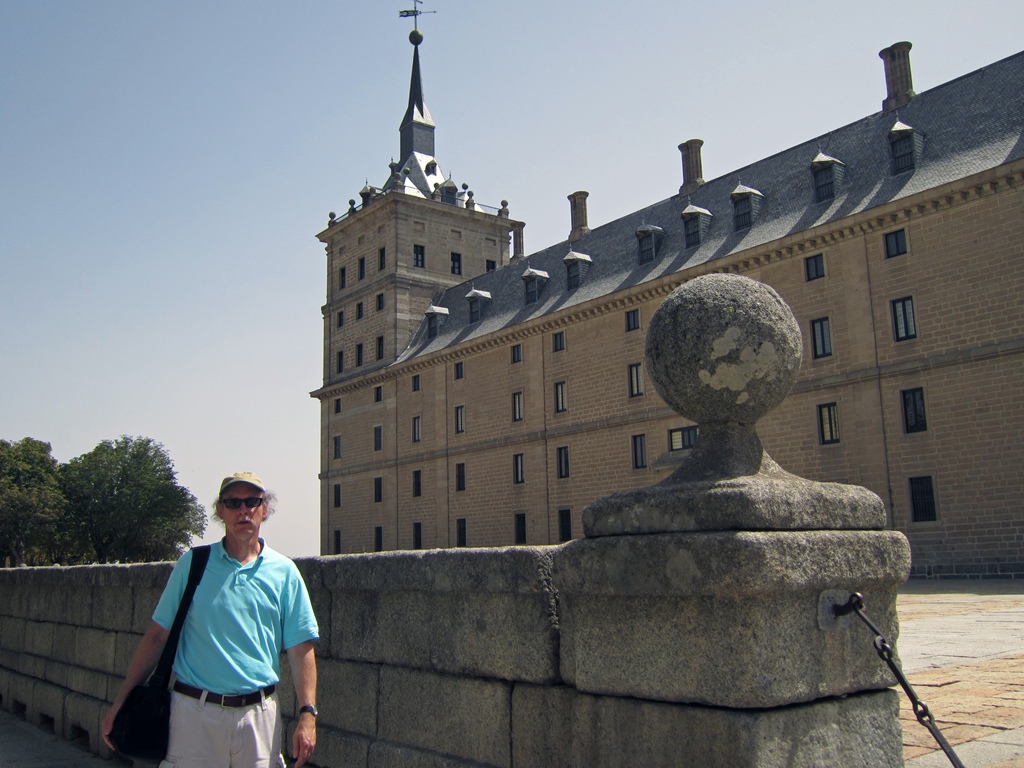El Escorial Western Façade
Not long after attaining the Spanish throne in 1556, Philip II was possessed by the idea
of creating a combined monastery/palace complex in the general area of Madrid, where he
was moving the royal court. The complex was to be ambitious and on the austere side, as
part of the Counter-Reformation movement (the not-always-gentle reaction of the Catholic
Church to the outbreaks of Protestantism that had been springing up throughout Europe at
the time). Philip collaborated with the architect Juan Bautista de Toledo on a plan, and
construction began in 1563 at the foot of Mt. Abantos, about 28 miles northwest of Madrid.
Toledo died in 1567, but his work was taken over by his apprentice, Juan de Herrera, who
oversaw the project through its completion in 1584. The immense complex still serves its
original purposes and is still in fine condition. The monastery, originally run by
Hieronymite monks, is now run by the Order of Saint Augustine. Much of the complex is open
to visitors, and about half a million of them take advantage each year.
To join the visiting hordes, we had to figure out how to get to the monastery from Madrid.
There turned out to be two ways to get there using mass transit: the train or the bus.
The bus was surprisingly inexpensive and not significantly slower than the train (about 45
minutes each way), so we ended up taking the bus. The bus station at El Escorial also had
the advantage of being closer to the monastery than the train station. Madrid's bus
station was in the basement of the Moncloa Metro station, so we rode the Metro to the
Moncloa stop, found the right bus, paid the driver and took our seats. We didn't have to
wait long to depart, as there are four departures per hour.
On the way to El Escorial, we could see a large white cross in the distance from the bus.
This cross, 500 feet tall, is situated on top of a granite ridge into which a gigantic
basilica has been dug. The entire complex, also including a Benedictine abbey, was built
under the orders of Francisco Franco as a monument to those who died during the Spanish
Civil War. The complex is called the Valley of the Fallen (Valle de los Caídos), and
40,000 of the war's victims (from both the Nationalist and Republican sides of the conflict)
lie buried under the valley floor. Construction of the Basilica began in 1940 and was
completed in 1959. Some of the labor (about 10%) was performed by political prisoners, who
were given the choice of working on the project in exchange for a reduction of their
sentences. Contrary to his wishes (he wanted to be buried in Madrid), Franco is buried in
the basilica – his grave is located behind the altar. Many are still divided over his role
in Spanish history, and many visit the grave for reasons of their own (either to celebrate
his life or to make sure he is still dead). Our bus did not venture into the Valley of the
Fallen, but continued on into the town of San Lorenzo de El Escorial.
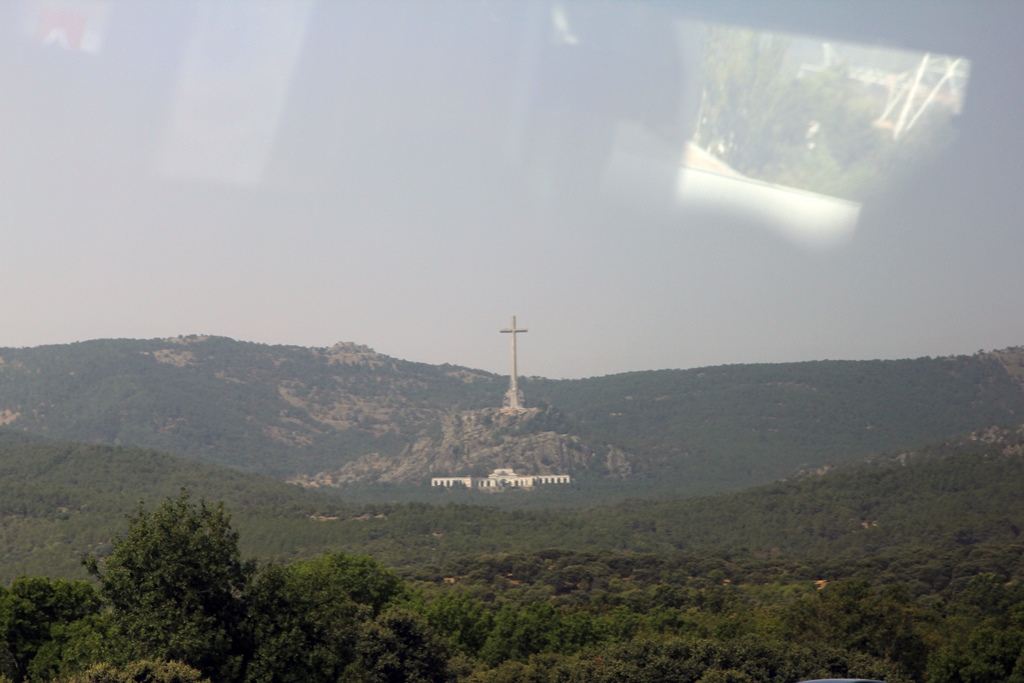
Valley of the Fallen
The bus station wasn't far from the monastery, but getting from one to the other did
involve a certain amount of walking through the town. The town seemed pleasant, with
shade trees along the street to reduce the effects of the Spanish heat. There were
signs pointing toward our destination (toward the left, on exiting the bus station).
Some of the houses and other structures were obviously of considerable age.

In Town
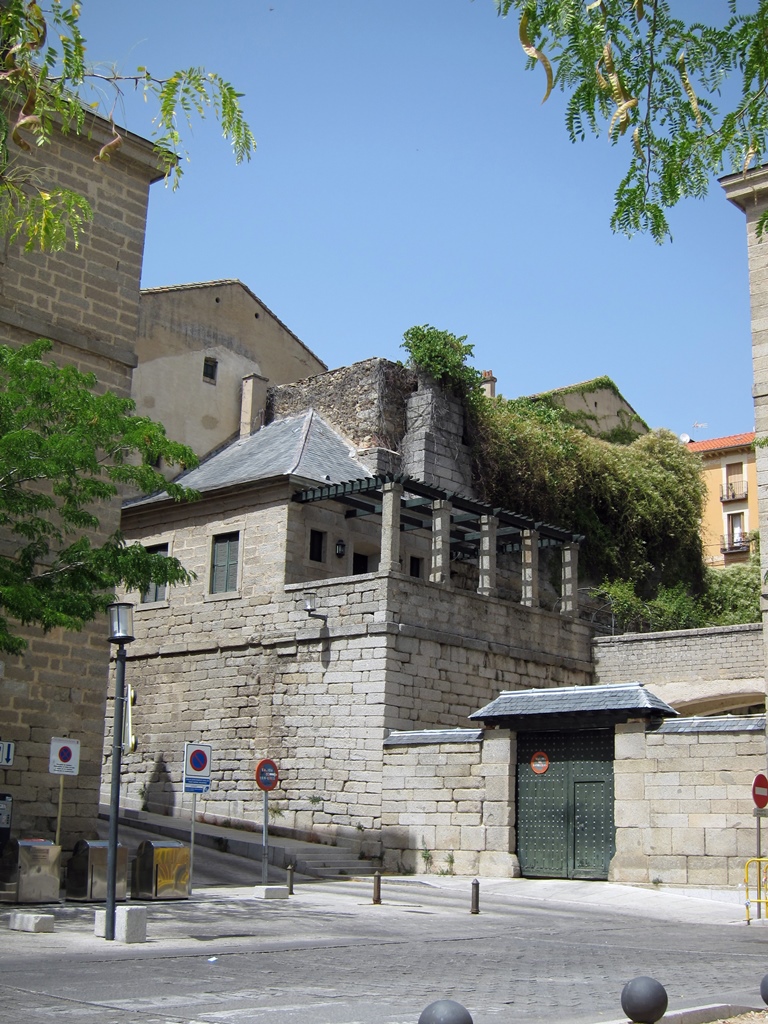
Old Building
On exiting the canopy of trees, there is no possibility of mistaking the fortresslike
El Escorial for anything else. One is confronted with the vast wall of the monastery's
north façade, which has spired towers at each corner and a little door in the middle
to accept visitors.
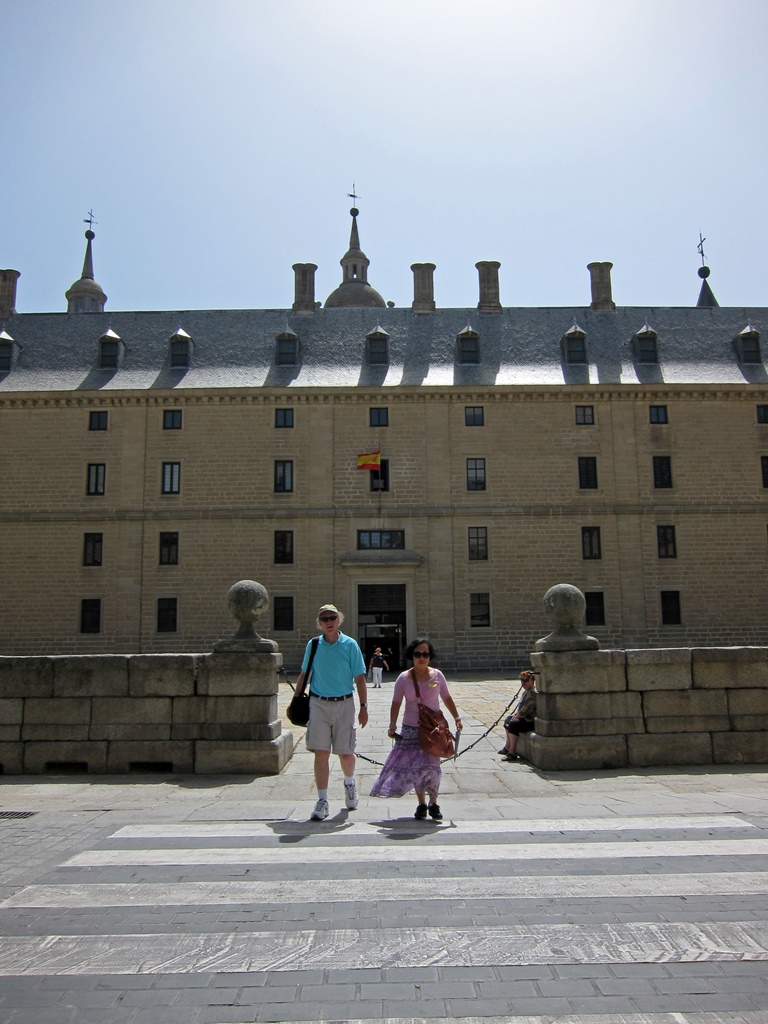
Bob and Nella and Northern Façade
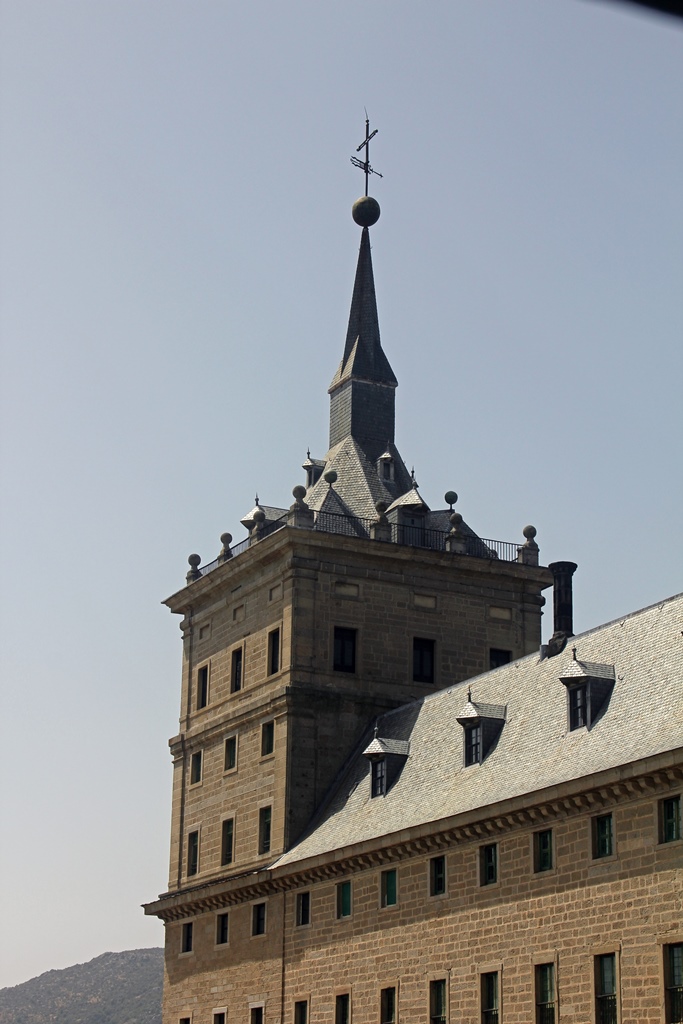
Corner Tower
Bob and Corner Tower
At the beginning of the self-guided tour route there is a sign forbidding all photography
inside the complex. So I apologize in advance for the quality of some of the pictures
appearing below. The El Escorial website
has more.
The tour route mostly passes through many of the palace rooms. As with most royal palaces,
it's clear that little expense was spared in its construction and decoration.
Courtyard

Hallway with Frescoes

Carved Wood Above Doorway
An art gallery showcases much of the big-name artwork that was purchased for display in the palace.
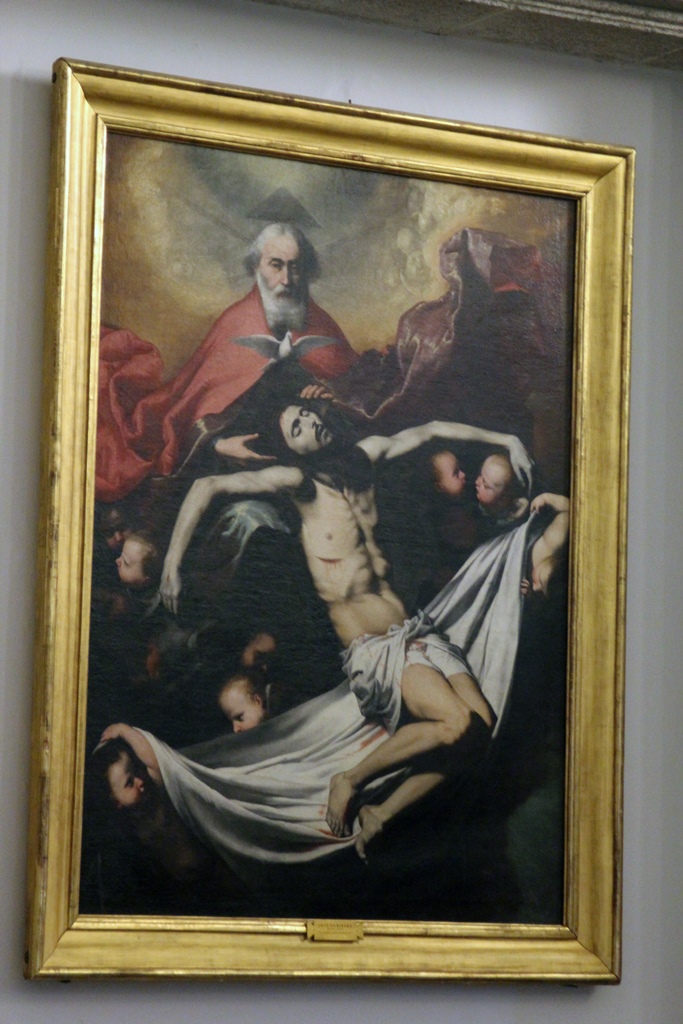
Holy Trinity, José de Ribera (1635-36)
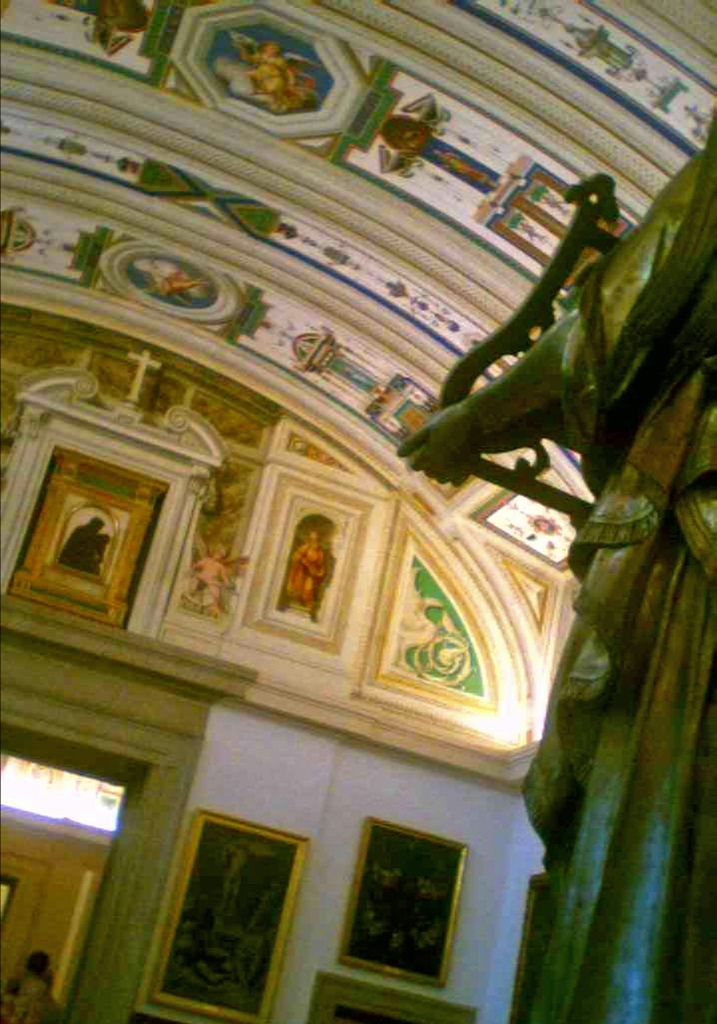
In the Art Gallery
One other purpose for which the monastery was built was to serve as a final resting place
for members of the royal family. There are two areas of the palace (or rather under
the palace) set aside for this, called the Pantheon of the Kings and the Pantheon of the
Princes. The Pantheon of the Kings is reserved for actual monarchs (male or female,
despite the name of the room), and for queen consorts who are mothers of monarchs. The
first monarch entombed there is Philip II's father, Charles/Carlos I/V (a man of many
roles, known both as Charles I of Spain and as Holy Roman Emperor Charles V), who Philip
had relocated from the less prestigious monastery where he'd originally been buried. The
Pantheon is an ornately decorated but dimly lit octagonal room where a visitor is
surrounded by shelving with room for twenty-six identical marble sepulchers, nearly all
occupied. There are currently two free spaces, reserved for the parents of King Juan
Carlos I, who are deceased but "awaiting interment". Which brings up the issue of the
final destinations for the still-living Juan Carlos and his consort, Queen Sofía (and
their son, Felipe VI, and his successors). As of now, this is still up in the air. The
Pantheon of the Princes might be a possibility – this is a multi-room area with space for
sixty niches, of which only thirty-seven are filled (there is more variety in the tombs
here also) – but this might be unacceptable for one reason or another.
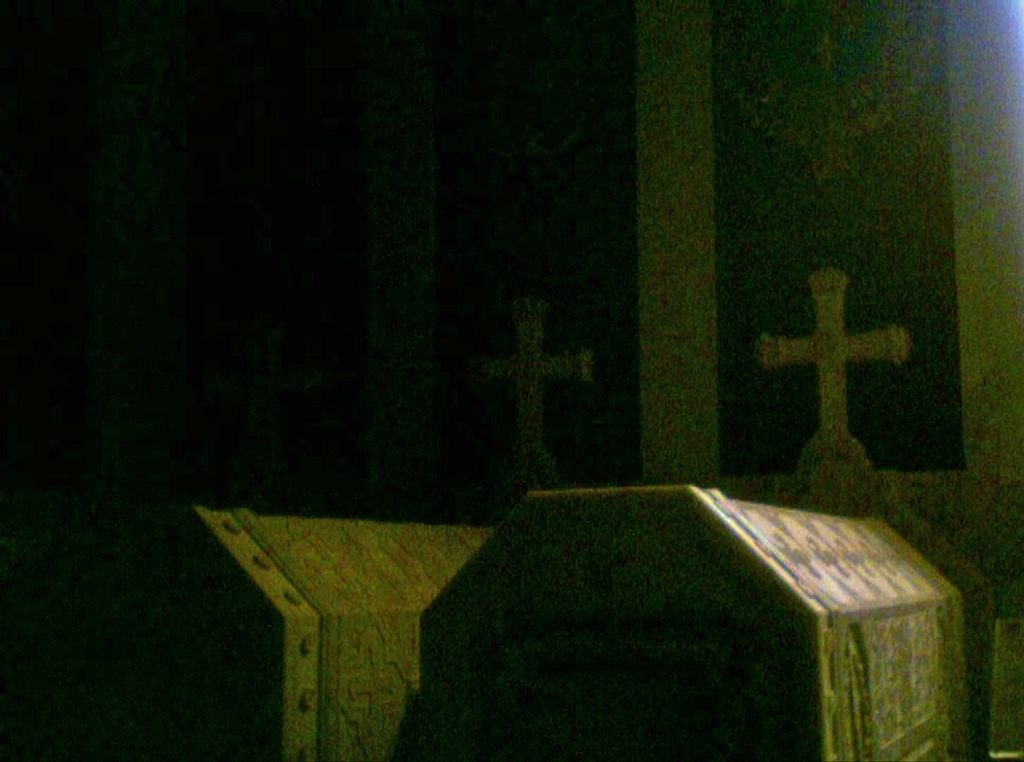
In the Pantheon of the Princes
The description "awaiting interment" relates to a time-honored procedure for processing
the remains of the royal deceased. It seems the newly deceased are placed into leaden
urns and left in a room called a pudridero (there are two - one for the kings and
one for the princes) to decompose for fifty years, after which the urns are appropriately
entombed along with their contents. The pudrideros are not part of the
tour – one hopes the ventilation is stellar.
As required for any monastery, El Escorial has a place of worship, called the Basilica of
San Lorenzo el Real. As one would expect, it is well decorated, inside and out, and it
has a big dome on top. There is a connection between the basilica and the royal
bedchamber, in the form of a window through which the king or queen could observe mass
if physically incapacitated (as Philip II was in his later years).
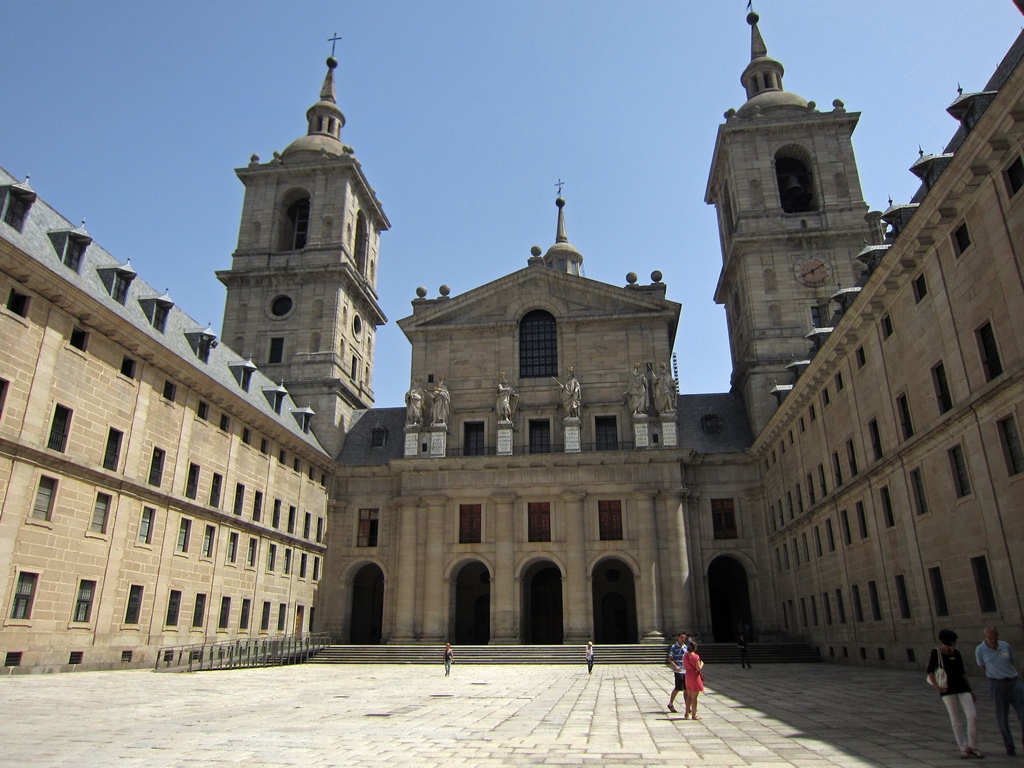
Courtyard of the Kings

Courtyard of the Kings and Basilica
Basilica Bell Tower
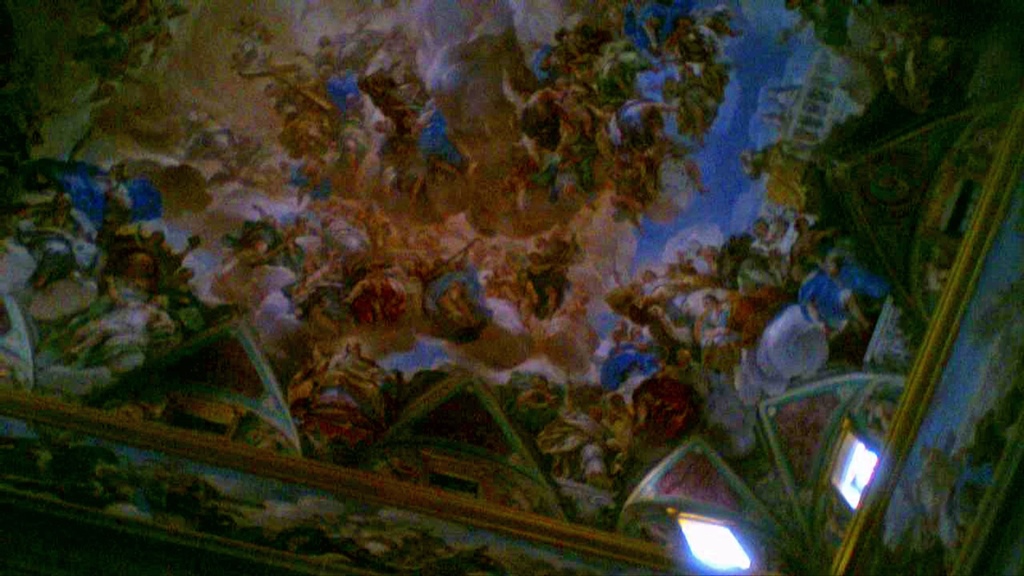
In Basilica
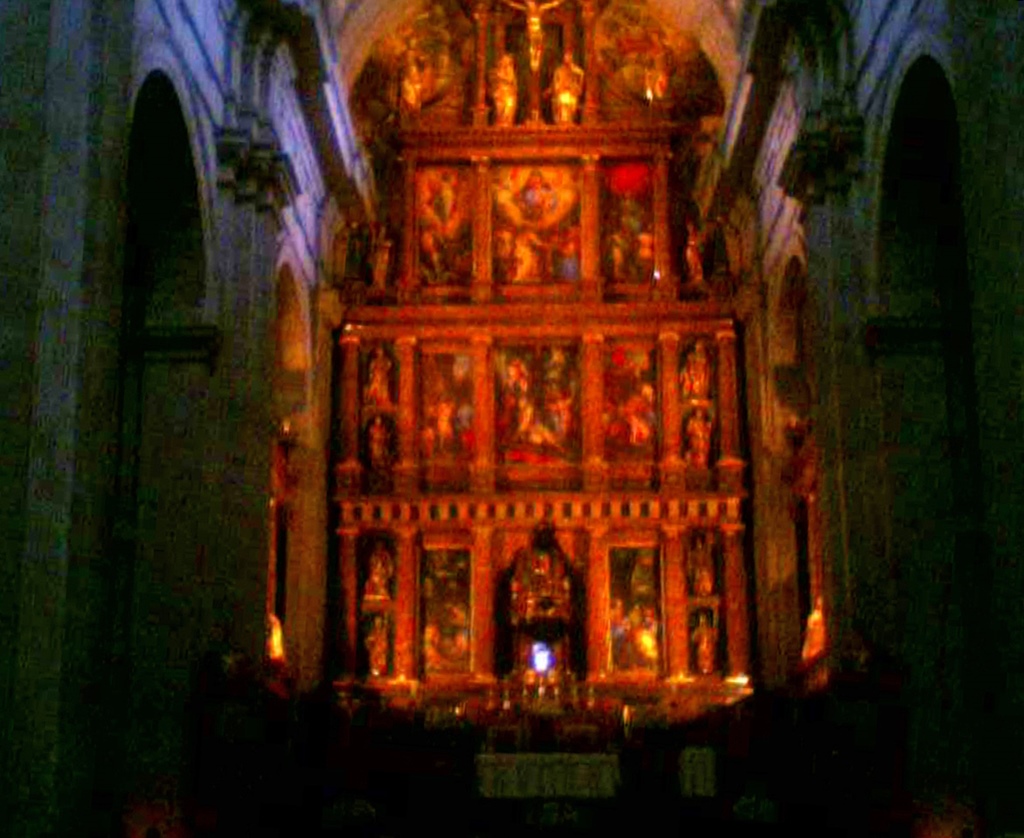
Altarpiece
The final stop on the tour is the Library, which has many priceless volumes and is
lavishly decorated with ceiling frescoes. There is also a large armillary sphere,
dating from 1582 (a gift from Cardinal Fernando de Medici of Florence) and representing
the Ptolemaic view of the solar system.

Ceiling Frescoes in Library
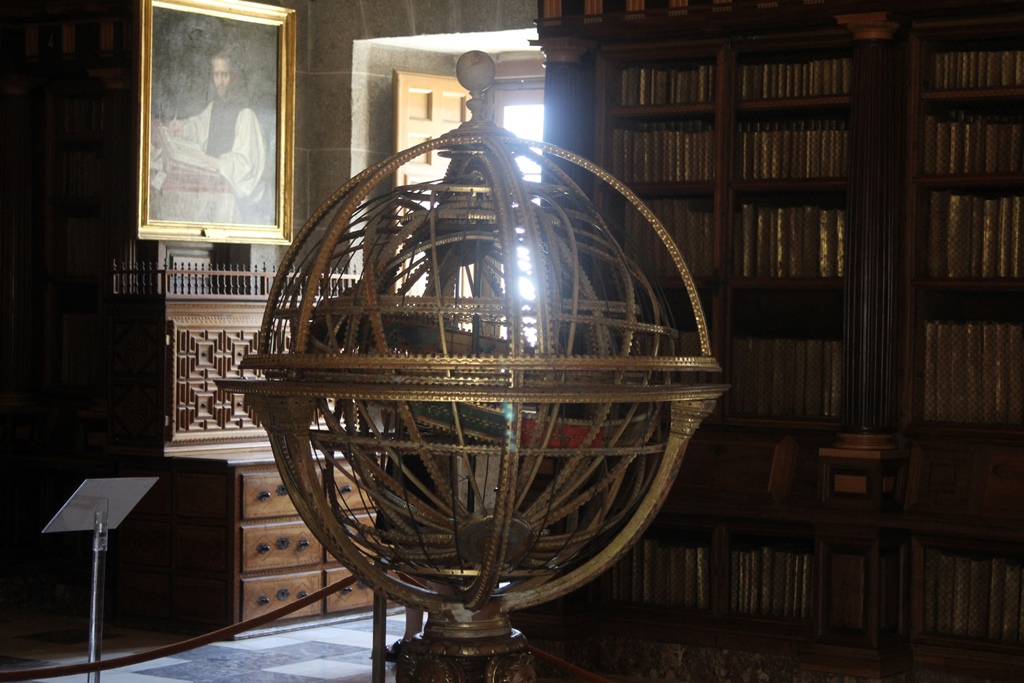
Armillary Sphere
Exiting the monastery, we headed into town and found something for lunch.
Nella and Outer Wall
We returned to the bus station and caught a bus back to Madrid. We spent the rest of the
day resting and packing. The following day we would be leaving Madrid, heading southward
for Andalusia and the fabled city of Granada.

